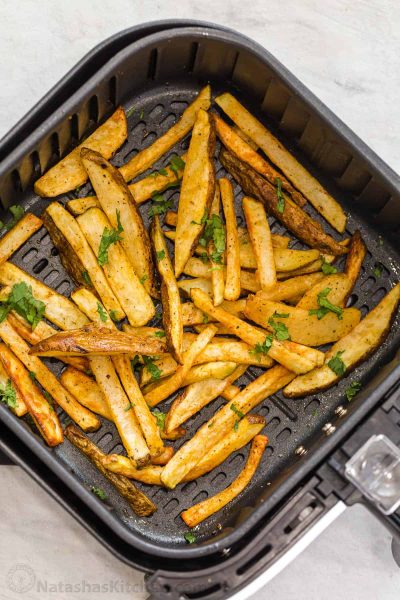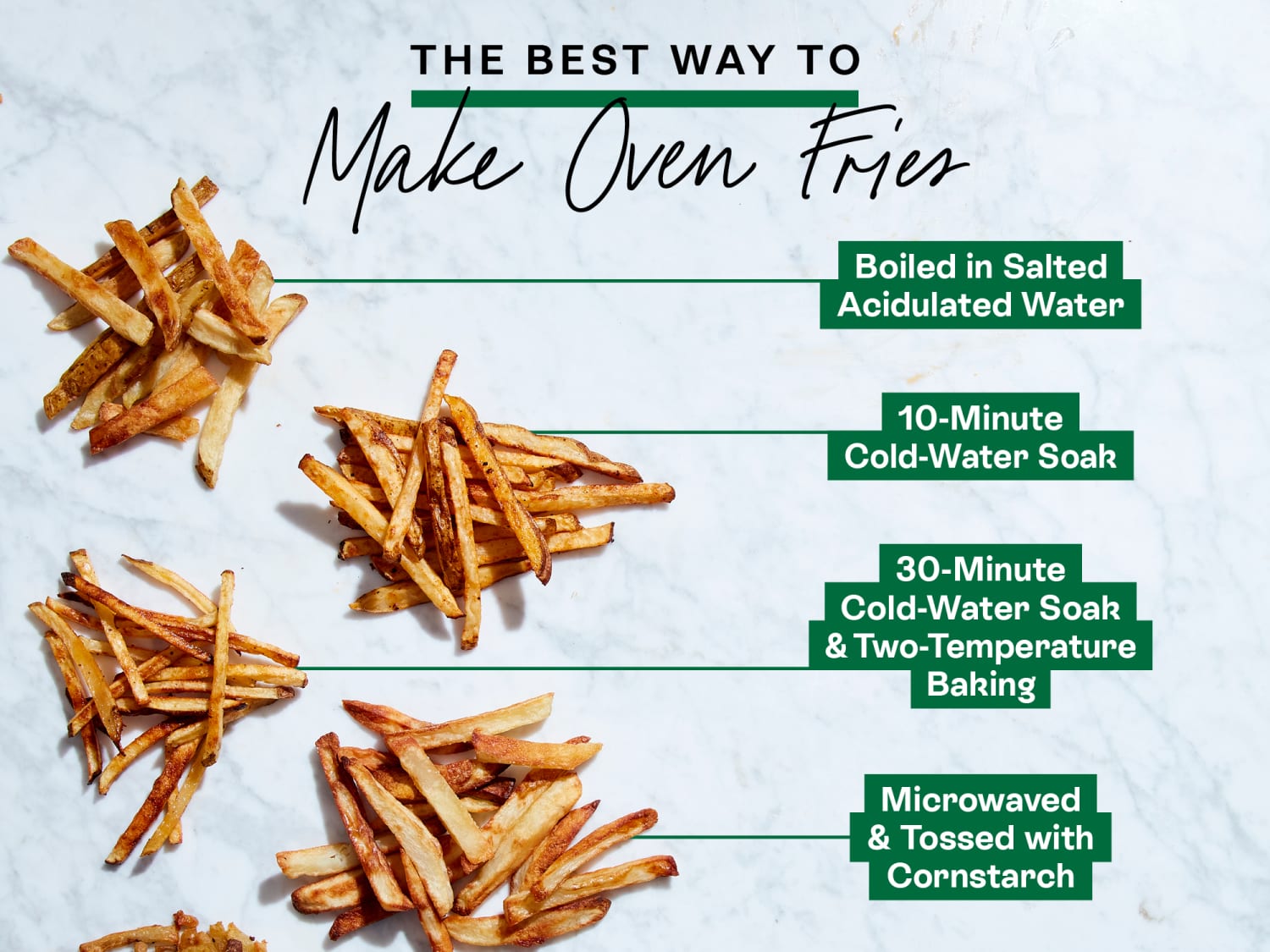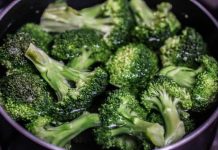Are you tired of your French fries turning out soggy or overly crispy? Wondering what the secret formula is for perfect, golden-brown fries?
Look no further! In this article, we will uncover the recommended temperature and time for cooking French fries, ensuring that your next batch will be a deliciously satisfying masterpiece.
Say goodbye to disappointing fries and say hello to culinary perfection. Let’s get started!
Choosing the Right Temperature
Ideal temperature for frying French fries
When it comes to cooking French fries, choosing the right temperature is crucial to ensure that they turn out perfectly golden and crispy. The ideal temperature for frying French fries is typically between 325°F (163°C) and 375°F (190°C). This temperature range allows the fries to cook evenly and develop a crispy exterior while retaining a soft and fluffy interior.
Why temperature is important for cooking French fries
Temperature plays a vital role in cooking French fries. Cooking at the right temperature ensures that the fries cook evenly and retain their moisture while achieving a golden-brown exterior.
If the oil temperature is too low, the fries will absorb excess oil and become soggy. On the other hand, if the temperature is too high, the exterior of the fries may burn before the interior is fully cooked. Maintaining the appropriate temperature throughout the cooking process is key to achieving delicious, perfectly cooked French fries.
Factors to consider when choosing the temperature
Several factors should be considered when determining the temperature for cooking French fries. Firstly, the type of cooking method being used, such as deep frying, air frying, or oven baking, can influence the optimal temperature.
Secondly, the type of potato being used can also affect the cooking temperature. Russet potatoes, with their high starch content, typically require higher temperatures for optimal results. Lastly, personal preference for the level of crispness and browning of the fries can also impact the chosen temperature. Experimenting with different temperatures can help you find the perfect balance based on your desired outcome.
Preparation of French Fries
Peeling and cutting the potatoes
To begin the preparation of French fries, start by peeling the potatoes. It is recommended to use high-quality potatoes, such as Russet or Idaho, as they have a higher starch content, which helps in achieving a crispy exterior and a fluffy interior. Once peeled, cut the potatoes into uniform-sized sticks or wedges. Aim for a thickness of about ¼ inch (0.6 cm) to ensure even cooking.
Soaking the cut potatoes
After cutting the potatoes, it is essential to soak them in cold water for at least 30 minutes. Soaking helps to remove excess starch from the potatoes, resulting in crispier fries. It also prevents the potatoes from oxidizing and turning brown. Make sure to change the water a couple of times during the soaking process to ensure all the starch is removed.
Drying the potatoes before frying
After soaking, it is crucial to thoroughly dry the potatoes before frying them. Excess moisture on the surface of the fries can lead to splattering and uneven cooking. Use a clean kitchen towel or paper towels to pat the potatoes dry. This step will help the fries achieve a crispy texture when they are cooked.
Deep Frying French Fries
Traditional deep frying method
Deep frying is a popular method for cooking French fries and is known for producing crispy and flavorful results. To deep fry French fries, fill a large, deep pot with cooking oil, such as vegetable or canola oil. Heat the oil to the desired temperature, usually between 325°F (163°C) and 375°F (190°C). Carefully lower the fries into the hot oil and cook them until they turn golden brown. Remove the fries from the oil using a slotted spoon or tongs, and place them on a paper towel-lined plate to drain any excess oil.
Temperature settings for deep frying French fries
When deep frying French fries, it is crucial to maintain a consistent temperature throughout the cooking process. Heat the oil to a temperature between 325°F (163°C) and 375°F (190°C) and monitor it using a cooking thermometer. Adjust the heat as needed to keep the temperature within this range. Cooking the fries at a slightly lower temperature will result in a softer texture, while a higher temperature will yield a crisper exterior.
Time duration for deep frying French fries
The cooking time for deep frying French fries can vary depending on the thickness and desired level of crispness. On average, it takes approximately 2-4 minutes to deep fry French fries.
However, monitoring the fries closely and using visual cues to determine their doneness is essential. The fries should be golden brown and crispy on the outside while remaining tender on the inside. It is recommended to cook the fries in small batches to ensure they cook evenly.
Air Frying French Fries
Introduction to air frying
Air frying has gained popularity as a healthier alternative to deep frying. It uses circulating hot air to cook food, resulting in a crispy texture similar to traditional frying but with significantly less oil. Air fryers are countertop appliances that provide a convenient and efficient method for cooking French fries.
Recommended temperature for air frying
For air frying French fries, preheat the air fryer to a temperature of 375°F (190°C). This temperature allows the fries to develop a crispy exterior while maintaining a soft and fluffy interior. The hot air circulation in the fryer ensures even cooking and reduces the need for excessive oil.
Time duration for air frying French fries
The cooking time for air frying French fries can vary depending on the thickness and desired level of crispness. On average, it takes approximately 15-20 minutes to air fry French fries.
However, it is essential to shake or flip the fries halfway through the cooking process to ensure even browning. The fries should be golden brown and crispy when they are done.
Oven-Baked French Fries
Advantages of oven-baked method
Oven baking is another popular cooking method for French fries. It offers a healthier alternative to deep frying while still achieving a crispy texture. Oven-baked fries require minimal oil and are a great option for those looking to reduce their fat intake. Additionally, oven-baking allows for larger batches to be cooked simultaneously, making it a convenient method for feeding a crowd.
Temperature settings for oven-baked French fries
To oven-bake French fries, preheat the oven to a temperature of 425°F (220°C). This higher temperature helps to promote browning and crispiness. Spread the fries evenly on a baking sheet and bake them for approximately 25-30 minutes, or until they are golden brown. It is recommended to flip the fries halfway through the cooking time to ensure even browning on both sides.
Time duration for oven-baked French fries
The cooking time for oven-baked French fries may vary depending on the thickness of the fries and the desired level of crispness. On average, it takes approximately 25-30 minutes to bake French fries in the oven. However, it is important to check the fries periodically and adjust the cooking time accordingly to achieve the desired level of crispiness.
Using a Deep Fryer
Benefits of using a deep fryer
Using a deep fryer offers several benefits when cooking French fries. Deep fryers provide a controlled cooking environment, ensuring a consistent temperature throughout the cooking process. They also have built-in features such as adjustable thermostats, timers, and oil filtration systems, making the frying process more convenient and efficient. Additionally, deep fryers minimize the risk of oil splattering, providing a safer cooking experience.
Temperature and time settings for a deep fryer
When using a deep fryer for cooking French fries, set the temperature between 325°F (163°C) and 375°F (190°C). This temperature range ensures the fries cook evenly and develop a crispy exterior. The cooking time can vary depending on the thickness of the fries and the desired level of crispness. It is recommended to follow the manufacturer’s instructions for cooking times and adjust as needed based on personal preference.
Monitoring and Testing
Importance of monitoring the cooking process
Monitoring the cooking process is crucial when preparing French fries. It allows you to ensure that the temperature is maintained within the desired range and that the fries are cooking evenly. Regularly checking the fries also helps prevent overcooking or undercooking, resulting in the perfect balance of crispness and tenderness.
Signs to determine if French fries are cooked
There are several visual cues to indicate if French fries are cooked to perfection. The fries should have a golden brown color and a crispy texture on the outside. They should also be soft and fluffy on the inside. Using a slotted spoon or tongs, you can test the fries by gently pressing one with the back of a fork. If it easily breaks and has a slight crunch, it is likely ready to be served.
Tips for testing the doneness of French fries
In addition to visual cues, you can also perform a taste test to determine the doneness of French fries. Take a fry from the batch and allow it to cool slightly. Bite into the fry and assess its texture. A well-cooked French fry should have a crisp exterior and a soft, fluffy interior. If the fry is too soft or lacks crispness, it may require additional cooking time.
Best Practices for Cooking French Fries
Choosing the right cooking oil
The choice of cooking oil can greatly impact the flavor and texture of French fries. Opt for high-quality oils with a high smoke point, such as vegetable, canola, or peanut oil. These oils can withstand high temperatures without breaking down, resulting in crispier and less greasy fries. It is also important to properly filter and store the oil for future use to maintain its quality.
Arranging the fries for even cooking
To ensure even cooking of French fries, it is crucial to arrange them in a single layer without overcrowding. Overcrowding the pan or fryer can cause the fries to steam instead of achieving a crispy texture. If necessary, cook the fries in batches to allow sufficient space for air circulation and even browning.
Avoiding overcrowding the cooking vessel
When deep frying, air frying, or oven baking French fries, it is essential to avoid overcrowding the cooking vessel. Overcrowding can lower the temperature of the oil or air, resulting in uneven cooking and soggy fries. It is recommended to cook the fries in small batches, allowing ample space for them to fry or bake evenly.
Factors that Affect Cooking Time
Thickness of the fries
The thickness of the French fries can significantly impact the cooking time. Thicker fries will take longer to cook, while thinner fries will cook more quickly. It is important to ensure that the fries are uniformly cut to ensure consistent cooking. Adjust the cooking time accordingly based on the thickness of the fries.
Type of potatoes used
The type of potatoes used can also affect the cooking time of French fries. Russet potatoes, with their high starch content, typically take longer to cook compared to waxy varieties such as Yukon Gold or red potatoes. Understanding the characteristics of the potato variety being used can help you determine the appropriate cooking time.
Altitude and atmospheric conditions
Altitude and atmospheric conditions can affect the cooking time of French fries. Higher altitudes and humid conditions can slow down the cooking process. If you live in a high-altitude area or in a humid climate, it may be necessary to adjust the cooking temperature or increase the cooking time slightly to compensate for these factors.
Achieving Crispy French Fries
Tips for achieving crispy fries
To achieve crispy French fries, it is important to follow a few key tips. Firstly, ensure that the fries are thoroughly dried before frying or baking. Excess moisture can prevent the fries from crisping up properly.
Secondly, choosing the right cooking oil with a high smoke point and maintaining the correct frying temperature will contribute to crispiness. Lastly, utilizing techniques such as double frying or utilizing an air fryer can enhance the crispiness of the fries.
Double frying method for extra crispiness
The double frying method is a technique commonly used to achieve extra crispy French fries. After an initial fry at a slightly lower temperature, remove the partially cooked fries from the oil and allow them to cool.
Once cooled, increase the oil temperature and fry the fries for a second time until they reach the desired golden brown color and crispiness. The double frying method helps to create a crisp and crunchy exterior while maintaining a soft and fluffy interior.
Draining and seasoning the cooked fries
After cooking French fries, it is essential to drain them on paper towels or a wire rack to remove any excess oil. This step helps to preserve the crispiness and prevent the fries from becoming greasy.
Once drained, season the fries with salt or any desired spices and seasonings. Tossing the fries gently ensures even distribution of the seasonings, adding an extra layer of flavor to the final dish.
In conclusion, cooking French fries to perfection involves much more than simply throwing them into a fryer or oven.
Choosing the right temperature, properly preparing the potatoes, and employing the correct cooking methods are all vital factors in achieving the ideal French fry. By following the outlined guidelines and tips, you can ensure that your homemade French fries will be crispy, golden-brown, and irresistibly delicious.
So go ahead, gather your ingredients, and embark on the journey to creating the ultimate batch of French fries.










































